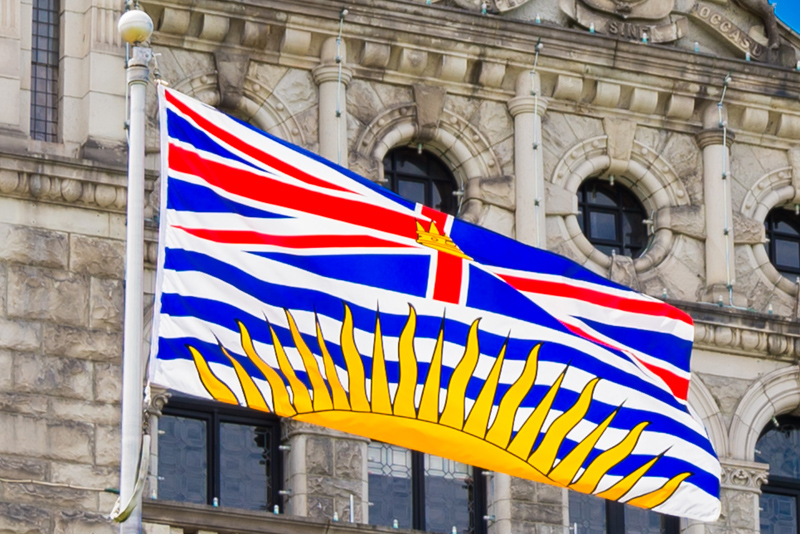Officially adopted in 1960, the provincial flag of British Columbia reflects B.C.'s Shield of Arms, which is the central section of B.C.'s Coat of Arms.
The upper portion of the flag is the Royal Union Flag - commonly known as the Union Jack - and serves to symbolize the British past of the province. The crown in the centre of the Union Jack is King Edward's Crown and represents the Royal Family. It was King Edward who had approved the first provincial Coat of Arms on which the flag is based.
The lower section of the flag includes a series of waving blue and white lines, symbolizing B.C.'s geographic location along the Pacific Ocean. Beneath, a rising sun serves to represent B.C.'s location in Canada as the western-most province.
The provincial flag is flown everywhere throughout British Columbia, including at schools, universities, government buildings, and the Parliament Buildings.

